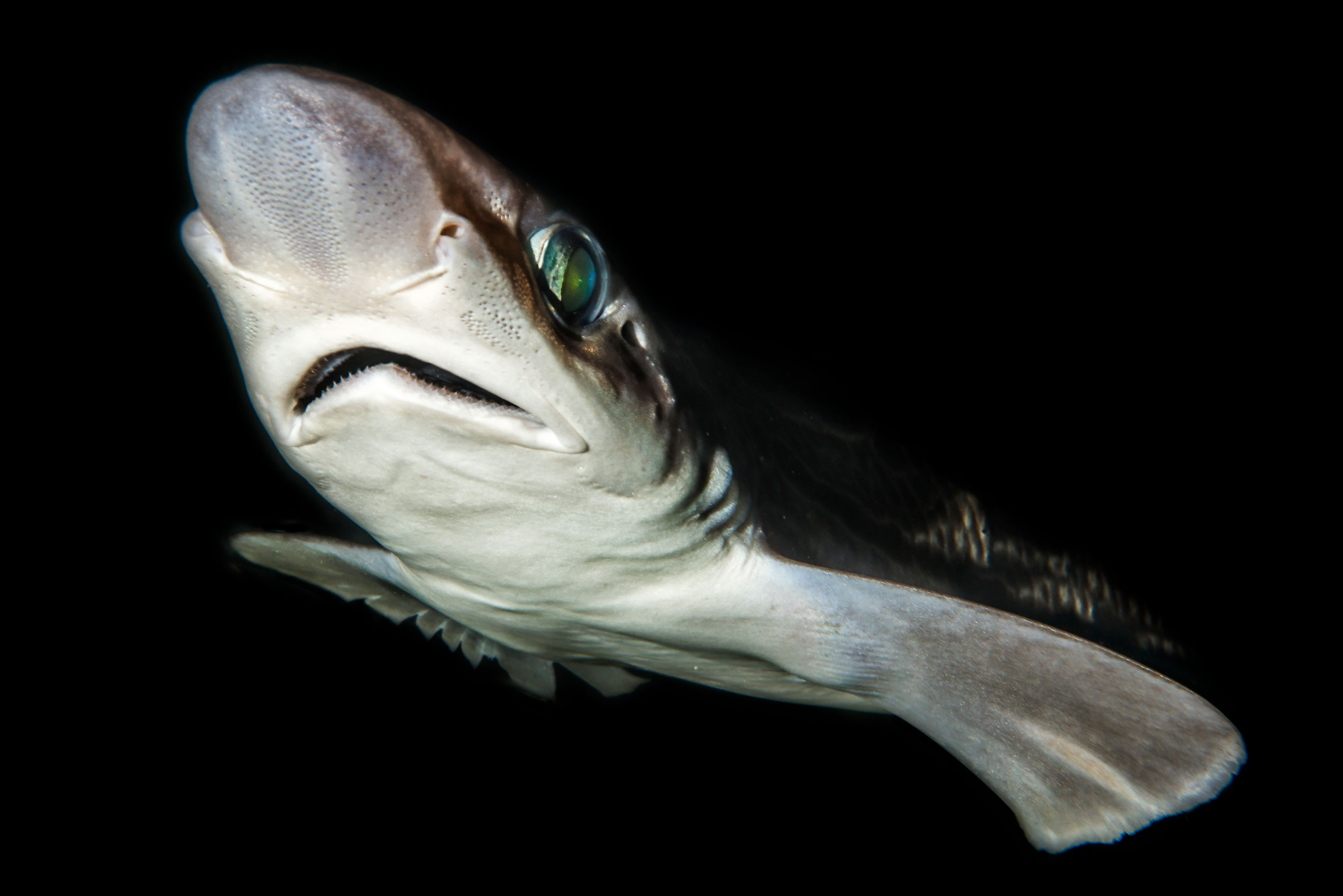Topic: Blackmouth catshark

A blackmouth catshark on the sea bottom
Photo: Erling Svensen / Institute of Marine Research
A blackmouth catshark (Galeus melastomus)
Photo: Erling Svensen / Institute of Marine Research
The blackmouth catshark is a small deepwater shark.
Photo: Erling Svensen / Institute of Marine ResearchPublished: 30.09.2024
Characteristic features
Catsharks are currently represented by two families, known as ‘catsharks’ (family Scyliorhinidae) and ‘deepwater catsharks’ (family Pentanchidae). In some classifications these two families are grouped together into the one Scyliorhinidae family. Pentanchidae is the larger of the two families, with approximately 110 known species around the world. One of these is the blackmouth catshark (Galeus melastomus), which occurs in Norwegian waters.
The blackmouth catshark, like other catsharks, is a small shark that primarily dwells near the seafloor. It reaches a maximum length of about 80 cm and has a characteristically brownish colour with large, pale-rimmed spots along its back. Another unmistakeable feature is its black mouth, from which it gets its name.
The blackmouth catshark is widely distributed in the northeast Atlantic from western Africa to northern Norway, and it also occurs in the Mediterranean Sea. In Norway, this shark is most common along the southern and western coasts, and it becomes much less abundant further north. This small shark is mostly found along the continental slopes at relatively large depths (150–1000 m), but is most common around 200–500 m. It can also be found in shallower waters.

Biology
The blackmouth catshark primarily occurs on sand, gravel, and muddy bottoms, where it feeds on a variety of bottom-associated organisms like crustaceans, cephalopods and small fish. As with other cartilaginous fishes, reproduction occurs by internal fertilization. However, as with other catsharks, this shark is oviparous, meaning it lays egg capsules known as mermaid’s purses. Different species lay characteristic mermaid’s purses whose features can aid in species identification. Blackmouth catshark mermaid’s purses are roughly 5-6 cm long and, unlike the small-spotted catshark, lack long tendrils in the corners.
Fishery and management
The blackmouth catshark is relatively productive and abundant compared to many other cartilaginous fishes, and is listed as Least Concern on international and Norwegian red-lists. It is of low commercial value in Europe, but is often caught as bycatch in several fisheries. Most catches are discarded, but in southern Europe a small amount is sometimes landed to be consumed or used as bait in other fisheries. Discard rates are difficult to estimate.
